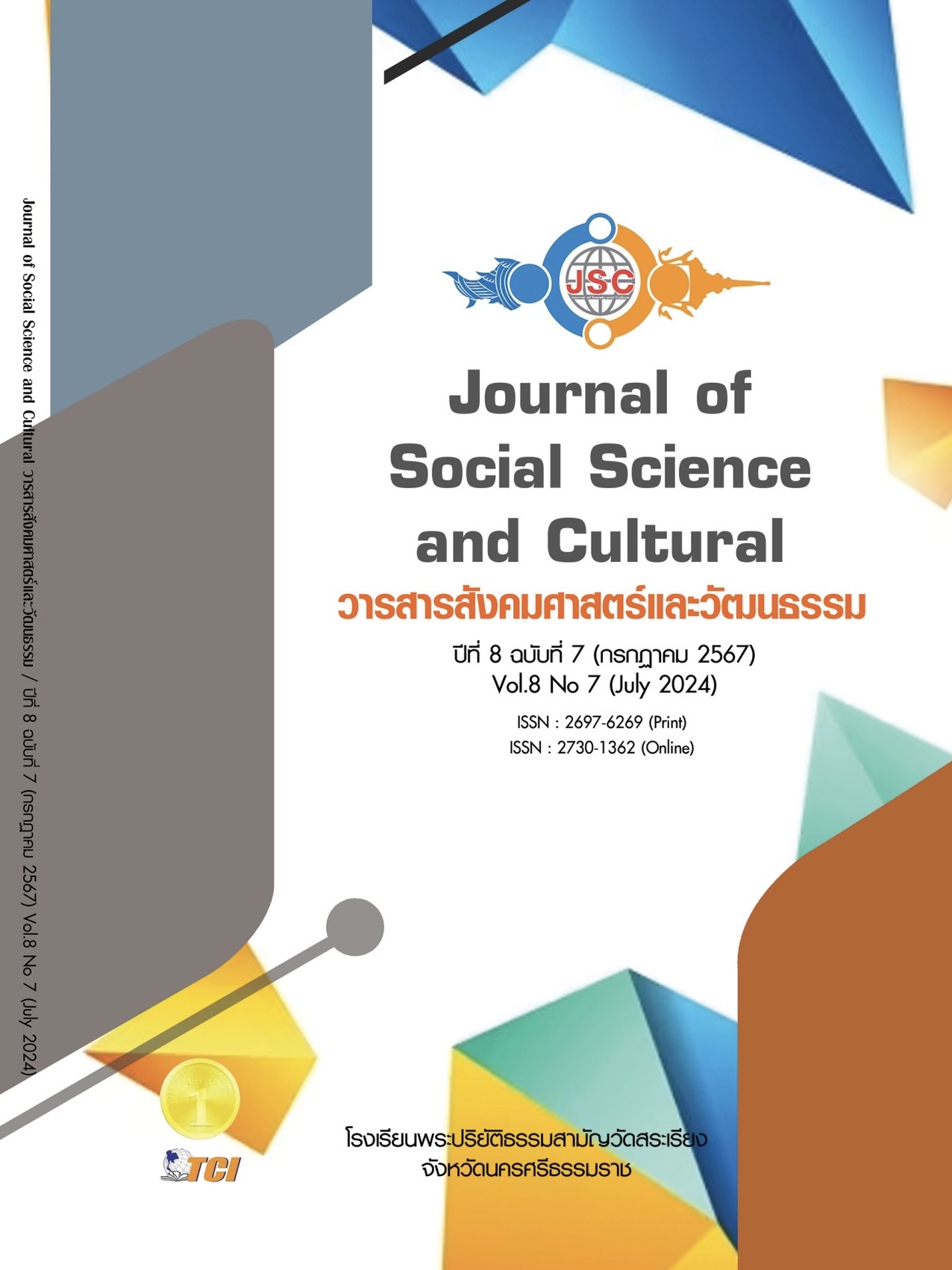THE DEVELOPMENT OF ELECTRONIC COMMERCE PLATFORM TO INCREASE MARKETING CHANNELS FOR ENTREPRENEURS IN SONGKHLA PROVINCE THROUGH HU MARKETING HUB
Main Article Content
Abstract
The research aimed to 1) Design and develop an electronic commerce platform to increase marketing channels for entrepreneurs in Songkhla province through HU Marketing HUB 2) Study the satisfaction of users of the electronic commerce platform to increase marketing channels for entrepreneurs in Songkhla province through HU Marketing HUB. This is a mixed-methods research study. Data were collected using focus groups with entrepreneurs, community enterprises, OTOPs, and SMEs in Songkhla Province by selecting a purposive sample of 20 cases and a satisfaction survey with 400 users of the e-commerce platform by convenience sampling. Data were analyzed using content analysis and statistical analysis. Including frequency, percentage, mean, standard deviation, T-test statistics and F-test statistics. The research results found that for entrepreneurs in Songkhla Province through HU Marketing HUB, which is a product distribution center for entrepreneurs in Songkhla Province, has a good operating system from the participation of entrepreneurs in Songkhla province, lecturers, and students of Hatyai Business School, Hatyai University. The website is www.humarketinghub.com and is divided into two parts: the Front-end system and the Back-end system. The satisfaction of users of the electronic commerce platform was found to be overall at a high level with a mean of 4.25. The Access to the HU Marketing HUB platform is available at all times, the system was easy to use, it was easy to find the products they wanted. There was a system to notify users of orders and payments, and the service received when ordering was clear and accurate. When comparing satisfaction with using electronic commerce platforms, it was found that age and the devices used to order products different people had different levels of satisfaction, with a statistical significance level of .05
Article Details
References
กนกวรรณ กาญจนธานี. (2561). การพาณิชย์อิเล็กทรอนิกส์. (พิมพ์ครั้งที่ 1). กรุงเทพมหานคร: สหมิตรพัฒนาการพิมพ์.
จรุมาส ชัยถิรสกุล และณักษ์ กุลิสร์. (2555). ปัจจัยที่มีผลต่อพฤติกรรมการใช้พาณิชย์อิเล็กทรอนิกส์ของผู้ใช้บริการอินเทอร์เน็ต. วารสารบริหารธุรกิจศรีนครินทรวิโรฒ, 4(1), 18-34.
ชัชวาลย์ ศรีประทุม. (2554). การศึกษารูปแบบการซื้อขายทางอินเตอร์เน็ต. ใน วิทยานิพนธ์บริหารธุรกิจมหาบัณฑิต สาขาวิชาบริหารธุรกิจ. มหาวิทยาลัยเกษมบัณฑิต.
ทวีศักดิ์ กาญจนสุวรรณ. (2552). การพาณิชย์อิเล็กทรอนิกส์ (E-Commerce). กรุงเทพมหานคร: เคทีพี คอมพ์แอนด์คอนซัลท์.
ธนาคารแห่งประเทศไทย. (2564). ผลกระทบจากธุรกิจ e-commerce ต่อผู้ประกอบการท้องถิ่น. เรียกใช้เมื่อ 12 กันยายน 2565 จาก https://www.bot.or.th/content/dam/bot/documents/th/research-and-publications/research/discussion-paper-and-policy-paper/ECommerce_paper.pdf
บุญณัฐ ฉัตรเสาวภัณฑ์. (2560). กลยุทธ์การสื่อสารการตลาดผ่านโซเชียลมีเดียสำหรับรายการโทรทัศน์. วารสารนิเทศศาสตร์และนวัตกรรมนิด้า, 4(2), 65-79.
ปณิศา มีจินดา. (2553). พฤติกรรมผู้บริโภค (Consumer Behavior). กรุงเทพมหานคร: Diamond in Business World.
ผกามาศ โอภาสวงศ์อภิรดี และนพินดา ไม้แก้ว. (2566). ปัจจัยการสื่อสารการตลาดแบบบูรณาการที่ส่งผลต่อความพึงพอใจในการใช้บริการแพลตฟอร์มพาณิชย์อิเล็กทรอนิกส์เพื่อซื้อสินค้าออนไลน์ของคนรุ่นใหม่ ในเขตกรุงเทพมหานคร. วารสารร่มยูงทอง, 1(3), 1-14.
ภิเษก ชัยนิรันดร์. (2551). บันทึกความสำเร็จธุรกิจดอทคอม. (พิมพ์ครั้งที่ 1). กรุงเทพมหานคร: ซีเอ็ด ยูเคชั่น.
รัญชิดา เกียรติกนก และเจษฎา วงศ์แสนสุขเจริญ. (2564). การยอมรับและการใช้เทคโนโลยีและคุณภาพเว็บไซต์ที่มีผลต่อการตัดสินใจสั่งซื้อสินค้าผ่านระบบ e-Commerce สำหรับธุรกิจแบบ B2B. วารสารการจัดการธุรกิจ มหาวิทยาลัยบูรพา, 10(2), 91-105.
อรรถเดช สรสุชาติ. (2563). สถิติประยุกต์และระเบียบวิธีวิจัย. ขอนแก่น: กรีนเนสไวด์ จำกัด.
แอนนา พายุพัด และคณะ. (2559). การวิเคราะห์และออกแบบระบบเว็บไซต์พาณิชย์อิเล็กทรอนิกส์สำหรับธุรกิจ OTOP 3-5 ดาว. วารสารมหาวิทยาลัยราชภัฏธนบุรี, 10(1), 90-102.
Fraenkel, R. J. & Wallen, E. N. (2006). How to design and evaluate research in education. (6th ed.). Boston: McGraw-Hill.
Jacops, L. C. (1991). Test Reliability, IU Bloomington Evaluation Services and Testing (Best). Indiana: Indiana University Blomington.
Turban, E. & King, D. (2008). Electronic commerce 2008 (A material perspective). New Jersey: Pearson Prentice Hill.


